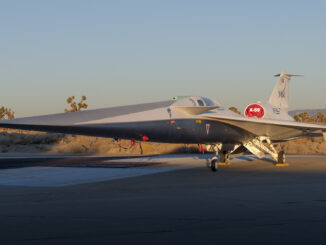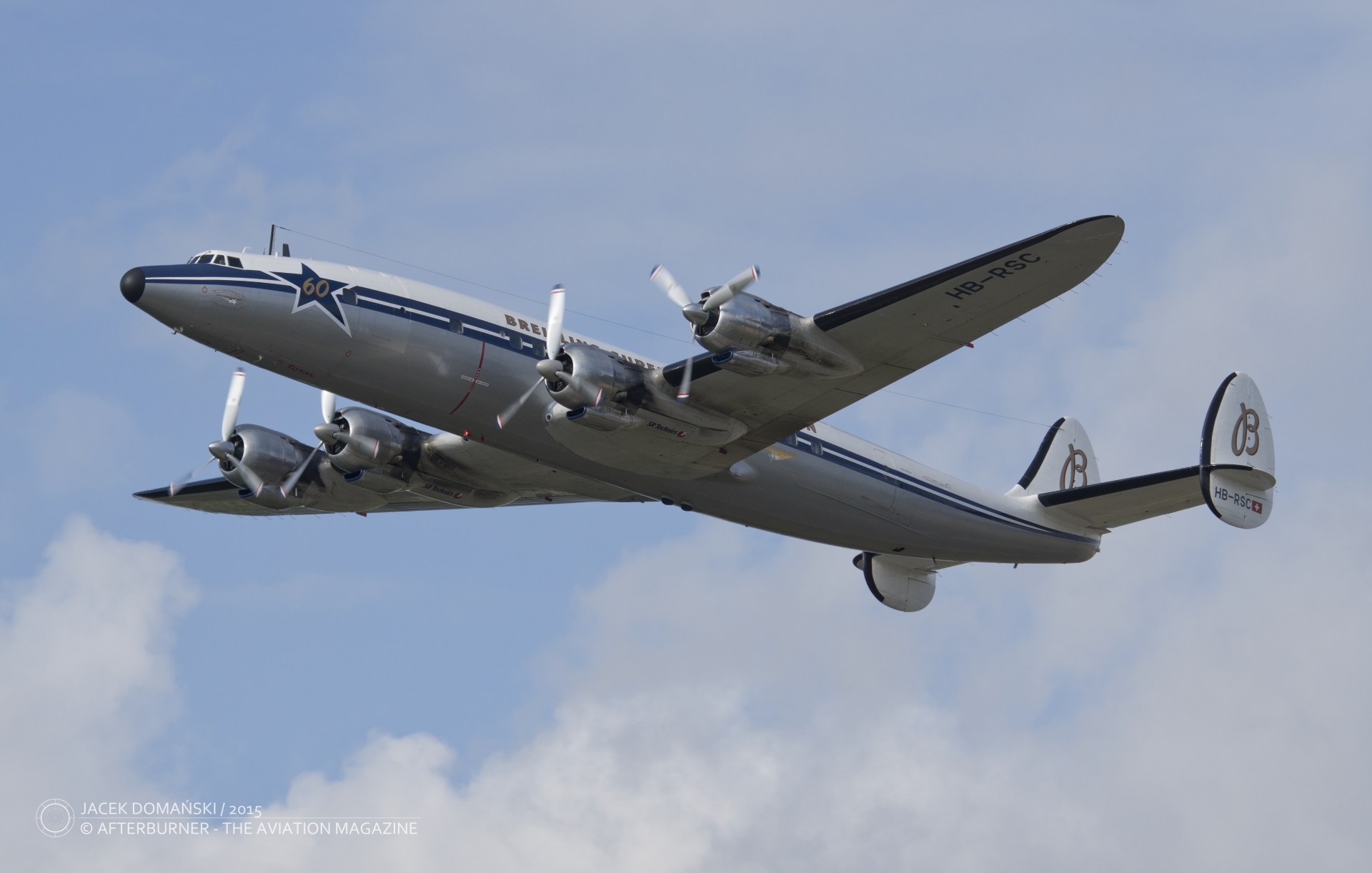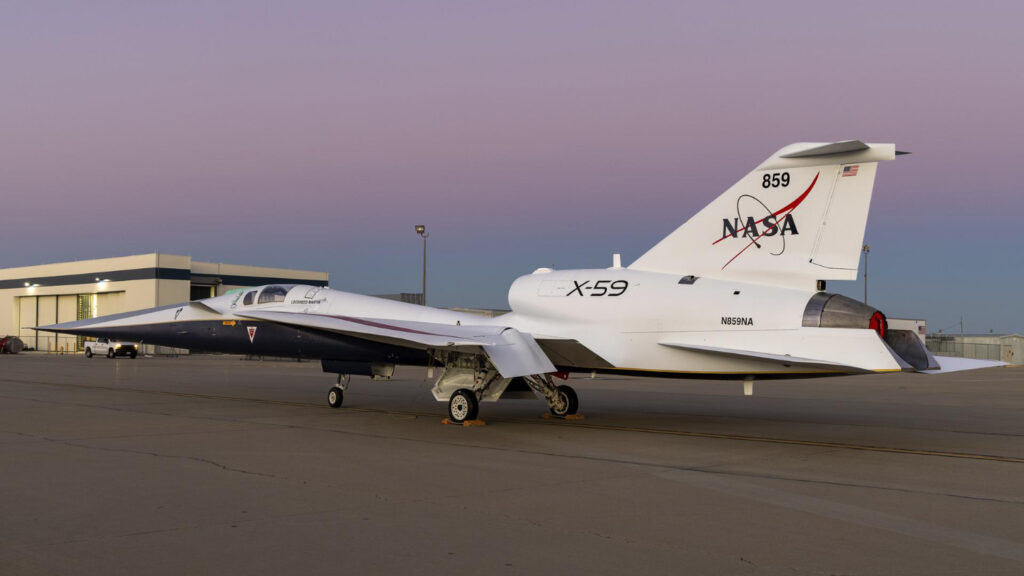 On 28 October 2025, the X-59 Quiet Supersonic Technology (QueSST) aircraft, developed by Lockheed Martin Skunk Works in partnership with NASA, successfully completed its first flight. The revolutionary aircraft is designed to pave the way for faster commercial air travel.
On 28 October 2025, the X-59 Quiet Supersonic Technology (QueSST) aircraft, developed by Lockheed Martin Skunk Works in partnership with NASA, successfully completed its first flight. The revolutionary aircraft is designed to pave the way for faster commercial air travel.
For its maiden flight, the X-59 took-off from the Skunk Works’ facility at US Air Force Plant 42 in Palmdale, California. During the flight the aircraft performed flawlessly, just as planned and expected, confirming its initial flight characteristics and performance in the air. After about an hour of flight, the experimental aircraft landed at its new home at the NASA Armstrong Flight Research Centre, located at Edwards Air Force Base in California.
“We are thrilled to achieve the first flight of the X-59. This aircraft is a testament to the innovation and expertise of our joint team, and we are proud to be at the forefront of quiet supersonic technology development.” – said the vice president and general manager of Lockheed Martin Skunk Works, OJ Sanchez.
The X-59 is a unique supersonic aircraft. Designed as part of the QueSST experimental project, it is capable of flying at supersonic speeds while limiting the sonic boom to a gentle thump.
Currently, supersonic flights over land are restricted. The reason for this is concern related to the characteristic, loud sonic boom generated when conventional supersonic aircraft exceed the speed of sound. This issue represents one of the main barriers to commercial supersonic aviation, and the X-59 is intended to help solve it.
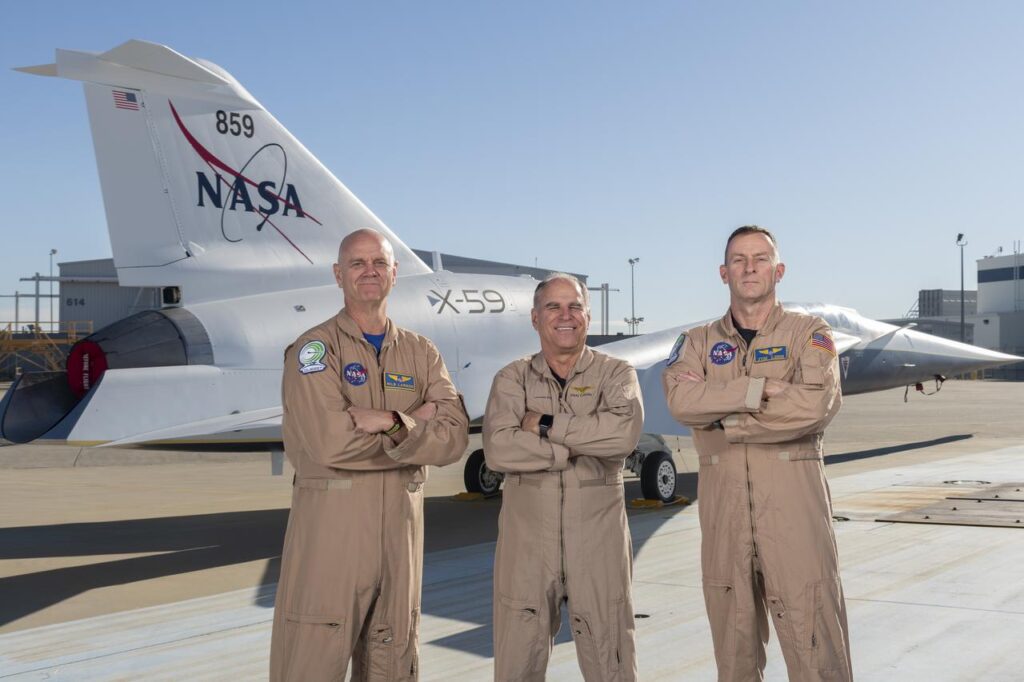
The successful development and flight testing of the QueSST aircraft is expected to inform the establishment of new, data-driven noise thresholds for commercial supersonic flights over land. This will pave the way for a new generation of supersonic aircraft that could efficiently and sustainably carry passengers and cargo at twice the speed of current commercial aeroplanes.
“X-59 is a symbol of American ingenuity. The American spirit knows no bounds. It’s part of our DNA – the desire to go farther, faster, and even quieter than anyone has ever gone before. This work sustains America’s place as the leader in aviation and has the potential to change the way the public flies.” – said Sean Duffy, acting NASA Administrator.
During its first flight, the X-59 remained subsonic, reaching a maximum speed of 230 mph (370 kph) and an altitude of 12,000 feet (3,660 metres). However, this is just the beginning. In the coming months, Skunk Works, in close cooperation with NASA, will continue the flight test campaign of the aircraft to expand its flight spectrum. As part of this series of tests, the X-59 is, obviously, also going to fly faster than the speed of sound, reaching the optimal speed and altitude to ensure a quieter-than-standard transition into supersonic flight. During these flights, NASA will measure the X-59’s acoustic signature and conduct public acceptance tests.
The X-59 and the QueSST programme demonstrate the commitment of Lockheed Martin and NASA to pushing the boundaries of innovation in the aerospace sector and their dedication to creating pioneering solutions for the future of flight.
More information about the X-59 QueSST can be found in our previous article related to that revolutionary aircraft: NASA X-59 Quiet Supersonic Aircraft officially revealed.
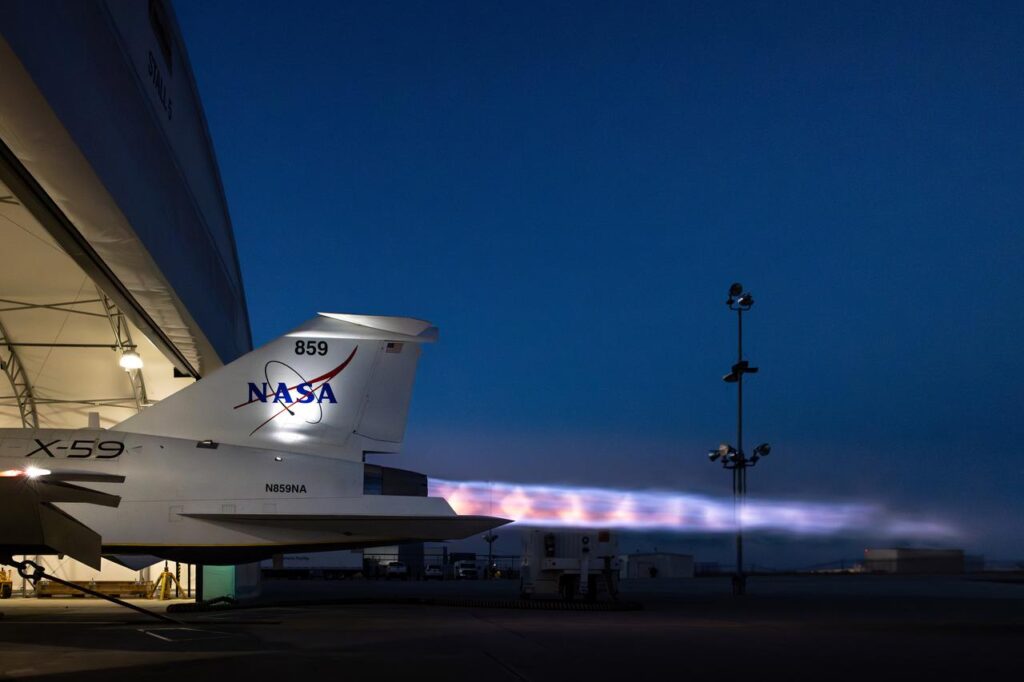
Cover photo: NASA’s X-59 quiet supersonic research aircraft sits on a ramp at Lockheed Martin Skunk Works in Palmdale, California, during sunset. (Source: NASA Image and Video Library, P23-171-158).
In this article, press release materials of Lockheed Martin were used. All photos © National Aeronautics and Space Administration.


